Dynamic range is a little limited in some shots, with its automatically-triggered HDR mode not always kicking in when required. We observed some white balance and autofocus irregularities, too, with varying colorcasts rendered across different outdoor lighting conditions and a few autofocus failures occurring in low light, too.
For video, the Nubia Z11 shoots 2160@30fps footage, with the high-resolution movie files packing plenty of texture.
As with stills, many videos offer accurate target exposures in both bright- and low-light conditions, and autofocus is generally accurate under stable lighting. The apparent lack of video stabilization is an issue, however, making stable movies with even moderate movement a challenge. While shooting video under changing lighting conditions, we also observed slow and inconsistent convergence for exposure and white balance, as well as some autofocus failures.
Outdoors
Shooting outdoors, the Nubia Z11’s exposure is generally good, and under stable lighting conditions exposure and white balance can be very consistent with repeatable results.
In high-contrast scenes, or when shooting towards the light, dynamic range is limited on some exposures, however, with the automatically-triggered HDR mode failing to kick in and preserve details in both the highlights and shadow regions.
Shooting the same subject in the same lighting conditions, the Samsung S7 Edge preserved better highlight detail and rendered richer, more saturated color, compared to the Nubia Z11.
The Nubia Z11 can render strong and vivid color on accurate target exposures, but overexposed highlight detail in some images results in slightly washed-out color. White balance can also be a little inconsistent in outdoor images, with varying colorcasts, including purple, blue or green evident when shooting under different lighting conditions. This said, it often records accurate white balance in well-balanced sunny conditions.
Indoors
As for capturing images in low light, the Nubia Z11 does a pretty good all-round job recording sharp handheld images even in extreme low light, thanks to its fast shutter speed and higher ISO strategy. But this does lead to quite high levels of noise, particularly in extreme low-light images, where a chromatic element is also sometimes visible.
Images shot in extreme low light (5 Lux) are a little under-exposed, but remain usable, and the 1/10 second exposure time is faster than we see on many devices in these conditions. Indoor images are more successful at 20 Lux, with the ISO 2200 and 1/12-second shutter speed recording a brighter exposure; and although very fine details are lost, detail is good despite some visible noise. Indoor color is bold and saturated on brighter exposures from 20 Lux onwards, but white balance can vary a little, with a yellow colorcast visible under tungsten and a green colorcast under fluorescent light sources.
Details: Explaining the score
Exposure and Contrast (83)
This is good overall score, with many successful exposures recorded. It’s fair to say the Nubia Z11 exposes the best in bright and well-balanced lighting conditions, with dynamic range limited in high-contrast scenes, which cost the device a few points. Indoor exposures also scored well despite a little under exposure in extreme low light.
Color (76)
A respectable score for color, which is bold and vivid with accurate white balance in images shot in well-balanced sunny conditions. Some points were dropped for slightly washed-out color in HDR exposures and visible color shading in both bright and low light-images. Indoors, white balance is fairly stable despite a yellow colorcast visible under tungsten light sources and a green colorcast under fluorescent lighting. Outdoors, white balance can be a little inconsistent, however, displaying a range of different colorcasts.
Autofocus (82)
The Nubia Z11 achieves a good score for autofocus, which is accurate in bright light. We observed some focusing failures in low light and it lost points for noticeable overshoots and slow convergence in low-light focusing. Autofocus also appears very unstable when combined with flash — around 80%, or 4 out of 5 flash pictures were completely out of focus.
Texture (83)
Noise (76)
High scores for texture and noise are a result of excellent detail preservation and low levels of luminance noise in outdoor and bright-light images, where the Nubia Z11 records more fine detail than the Samsung S7. In low light, results aren’t as strong, however, with a loss of fine detail as well as noticeable luminance and some chromatic noise reducing the overall score.
Artifacts (82)
Artifacts, or optical deficiencies, are well-controlled, resulting in a good overall score. The most significant issue is a loss of sharpness between the center and edges of the frame. A cyan shift in the sky, some ringing, moiré on high-frequency patterns as well as fringing and flare are also evident on some exposures, but these issues are only really problematic when viewing crops at 100%.
Flash (78)
The Nubia Z11’s dual LED flash unit provides good exposure with and without additional light sources, as well as accurate and repeatable white balance results. The flash output is well-centered in the frame, but heavy fall-off occurs in flash-only results, with strong vignetting and a build up of noise evident. In fact, high levels of noise are prevalent in most flash pictures, with many fine details lost. The most significant problem using flash, however, seems to be inaccurate autofocus, with many blurred handheld flash exposures recorded.
Video (72)
The Nubia Z11 shoots video with good target exposures in both bright- and low-light conditions, although slow exposure convergence and some overshoots are visible with lighting changes. Color and white balance are generally strong under consistent lighting, but again, convergence can be slow when transitioning from low- to bright-light environments, and some color shading is visible in all lighting conditions.
The good detail preservation observed with stills continues when shooting movies, especially in bright light, but some luminance noise is visible. Indoors, although the finest video details are lost, texture preservation is good; but again, noise is visible, with a noticeable buildup of chromatic noise in some areas.
Video autofocus is generally good, although some slight overshoots with visible steps and focus drops occur with changes in the lighting conditions. The Nubia Z11 achieved a good score for video artifacts, with only some minor judder and aliasing visible, but the lack of video stabilization affects the smoothness of handheld videos.
Photo Pros
- Exposure is generally good and stable.
- The detail preservation is very good and noise is low.
- Flash exposure is good with and without additional light sources.
Video Pros
- Good target exposure in both low- and bright-light conditions.
- Good texture preservation.
- Generally accurate autofocus when lighting is stable.
Photo Cons
- White balance is often inaccurate outdoors, with varying different colorcasts.
- The image dynamic range is limited.
- Color shading is always visible using tungsten light sources in low light.
- Color shading is often visible in outdoor conditions.
- Autofocus failures are visible, especially in low light.
- Handheld flash pictures are often blurry.
- Sharp flash pictures display a loss of detail and visible noise.
- Cyan shift in the sky is sometimes visible.
Video Cons
- No stabilization.
- Slow exposure convergence when changing from low- to bright-light conditions.
- Slow white balance convergence changing from low- to bright-light conditions.
- Autofocus failures are visible changing from low- to bright-light conditions.
- Luminance noise is visible in bright-light conditions.
- Color shading is visible in all lighting conditions.


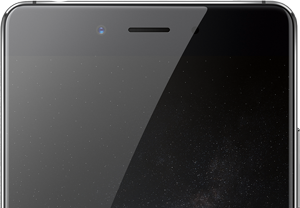


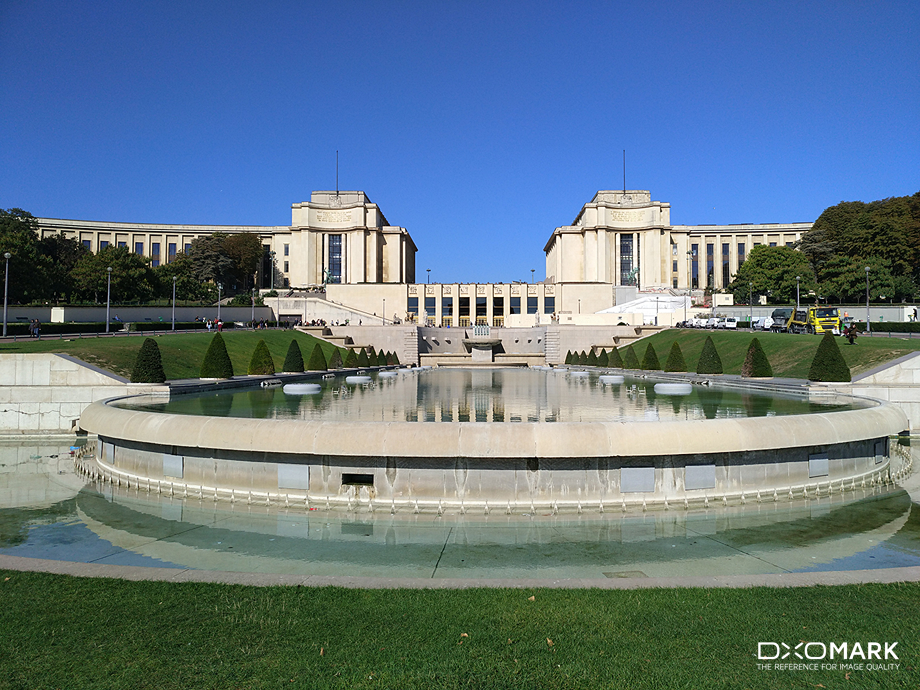
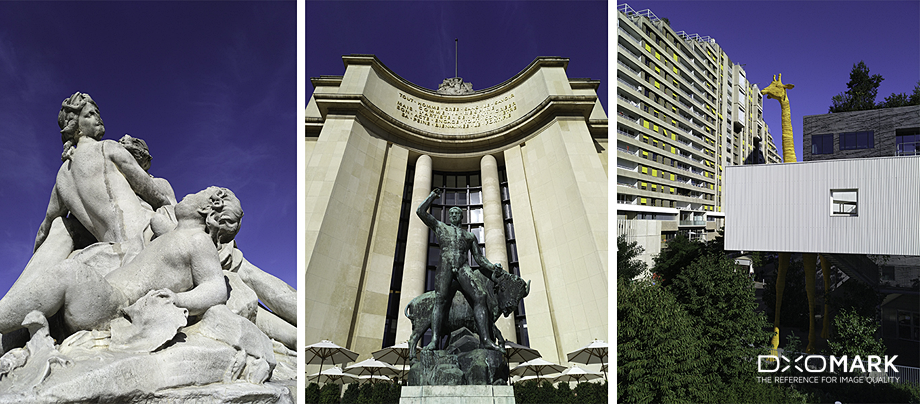
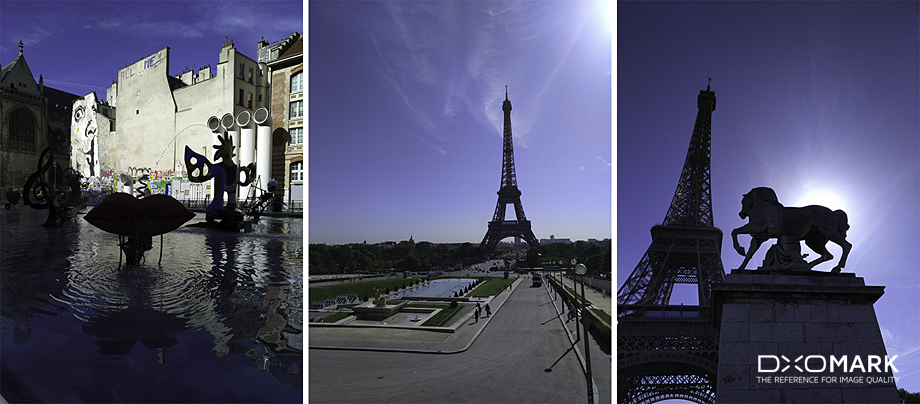

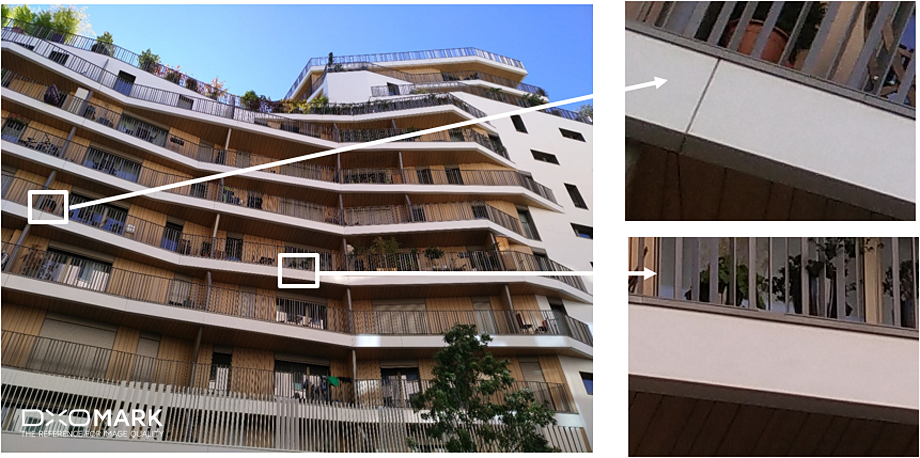
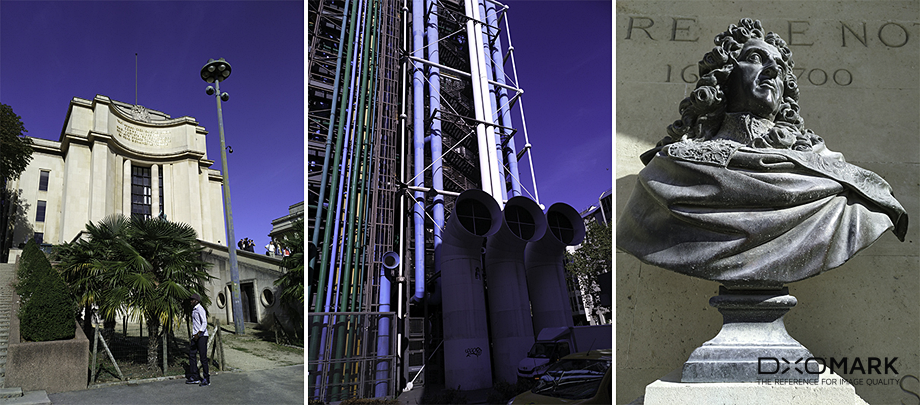
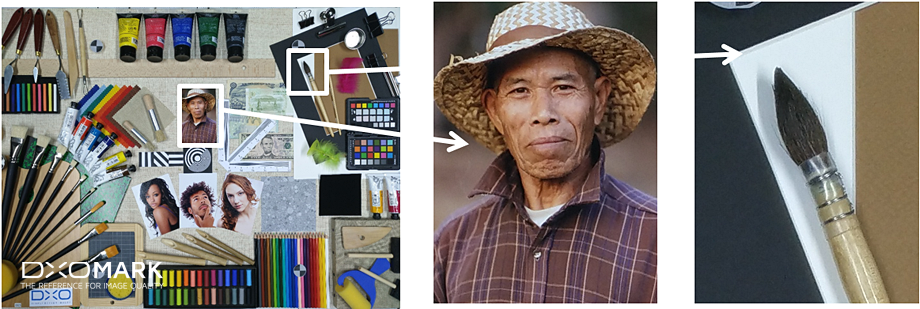
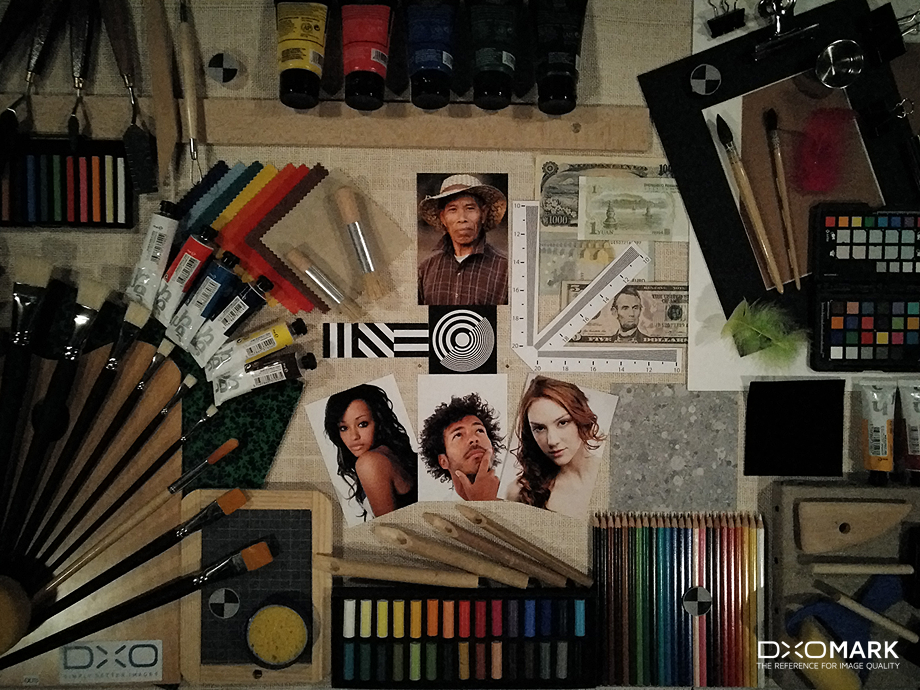

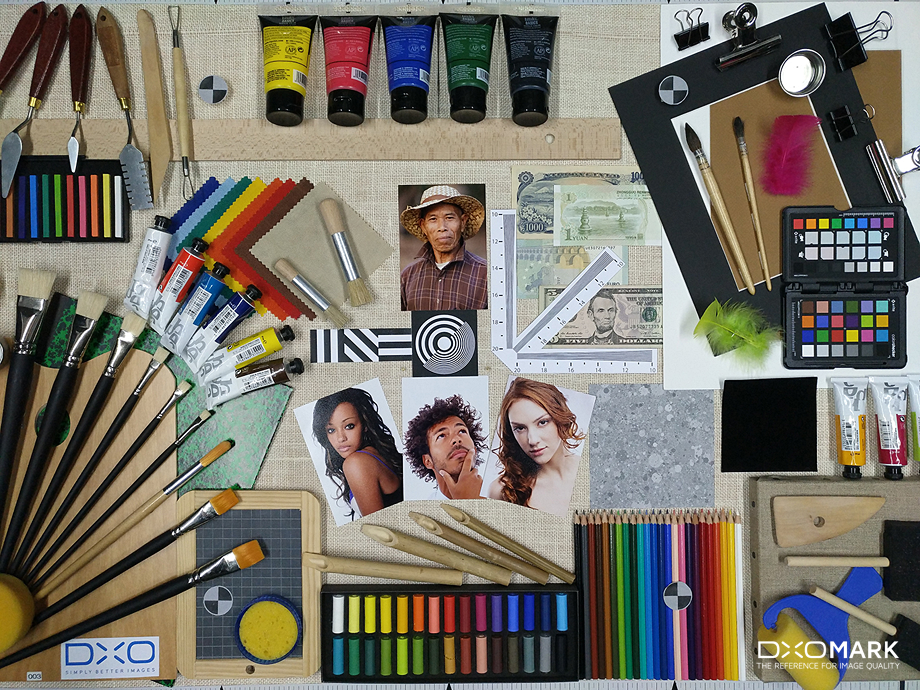
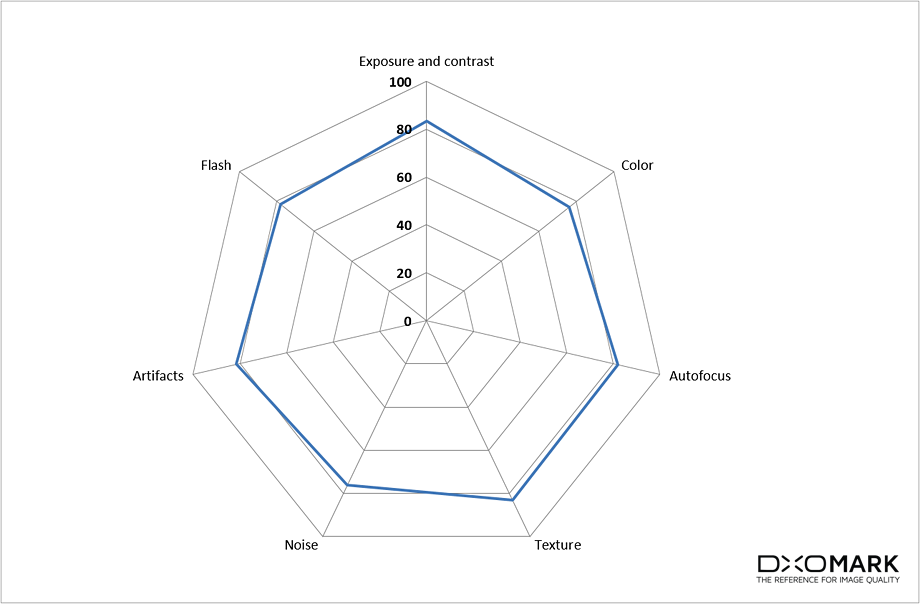
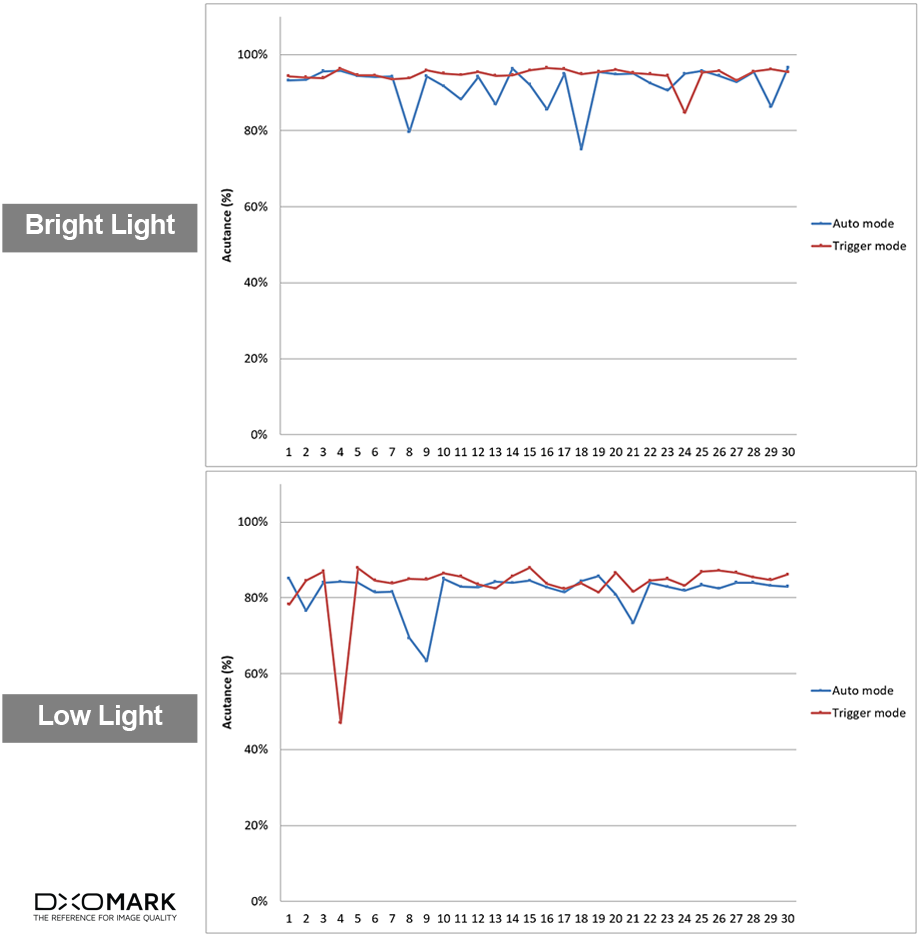
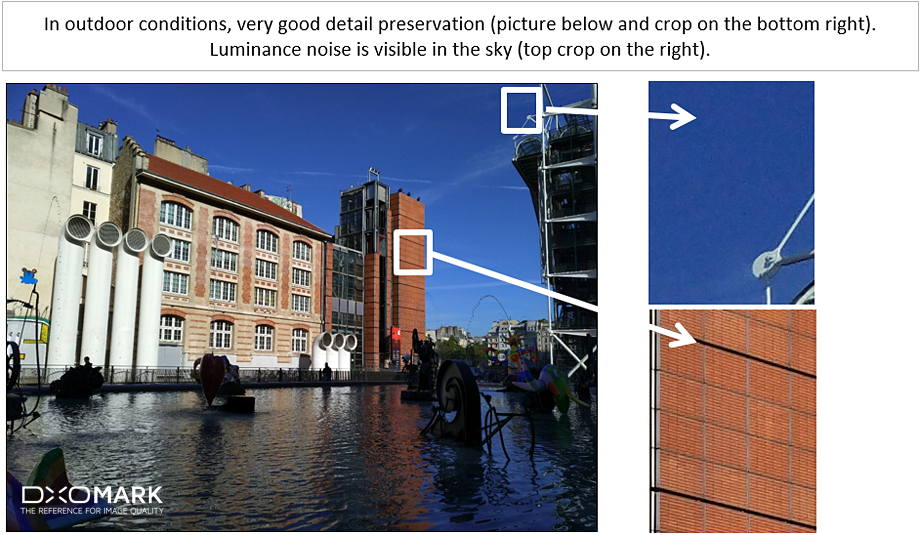
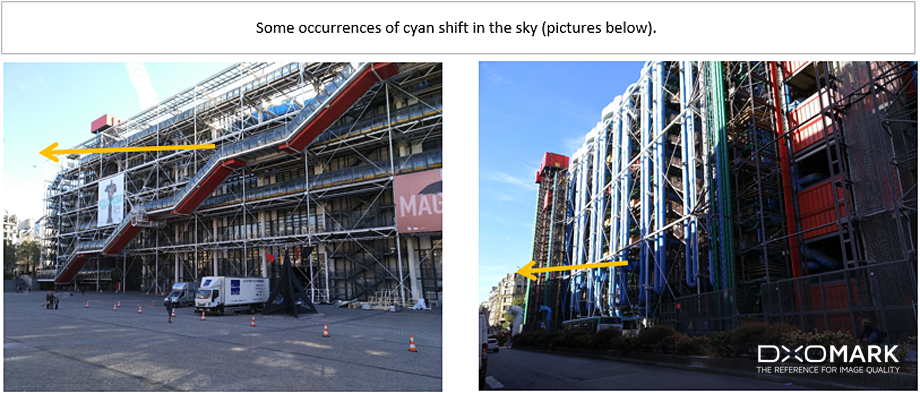
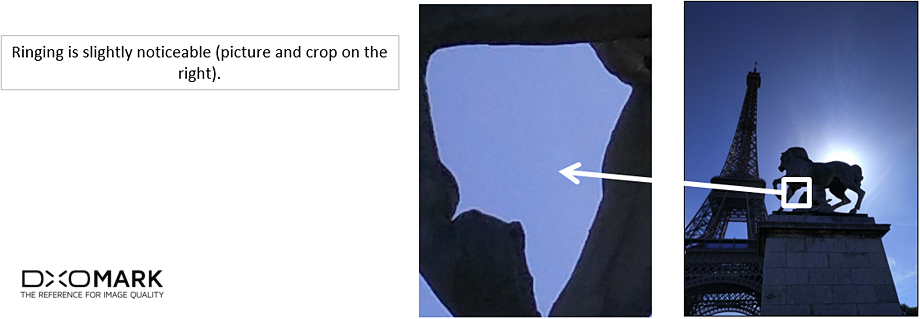
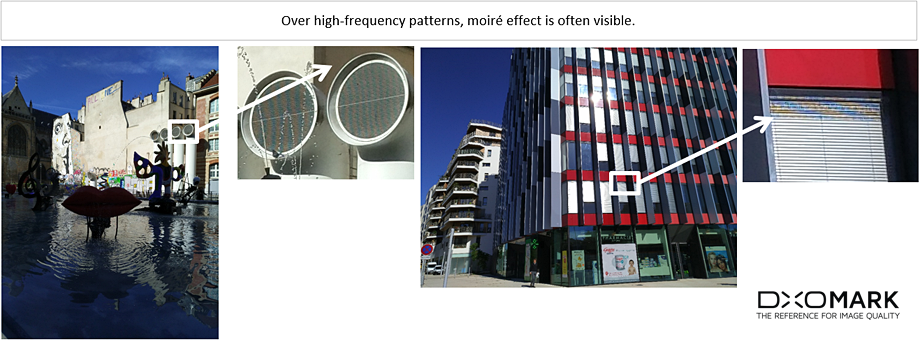
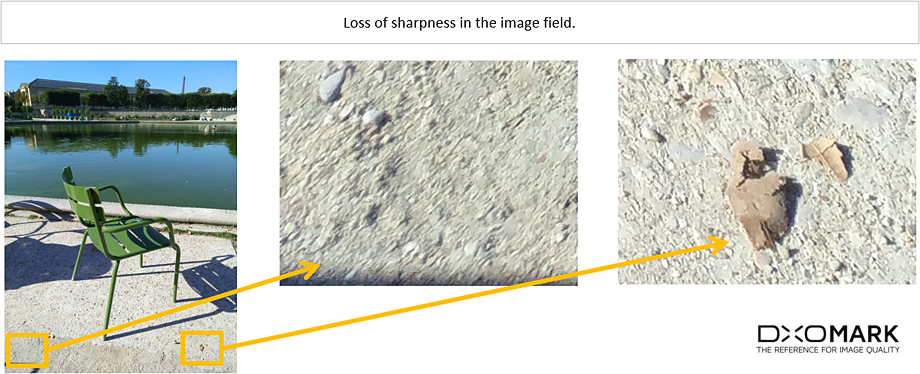
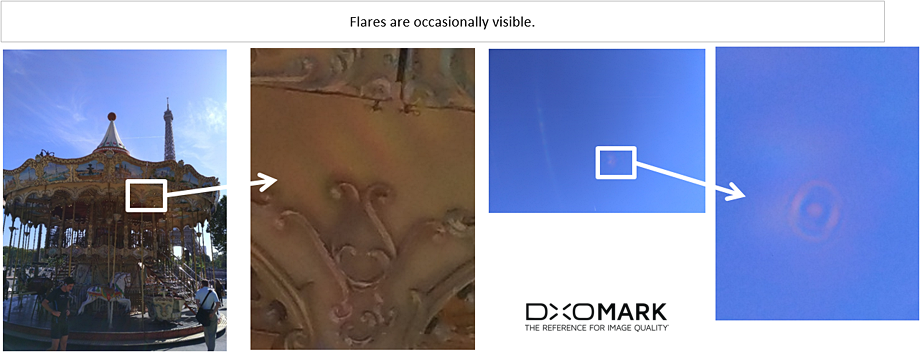
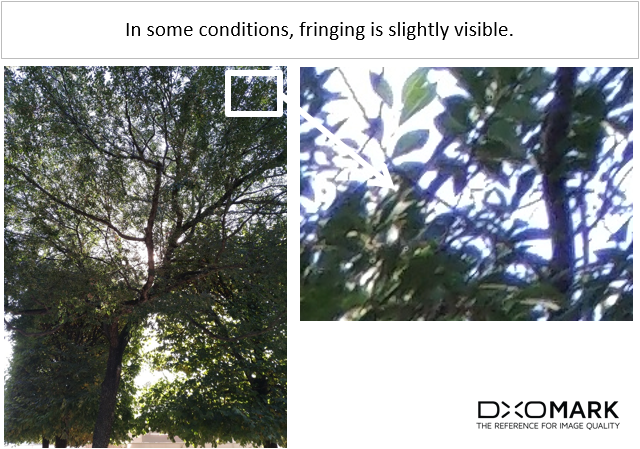
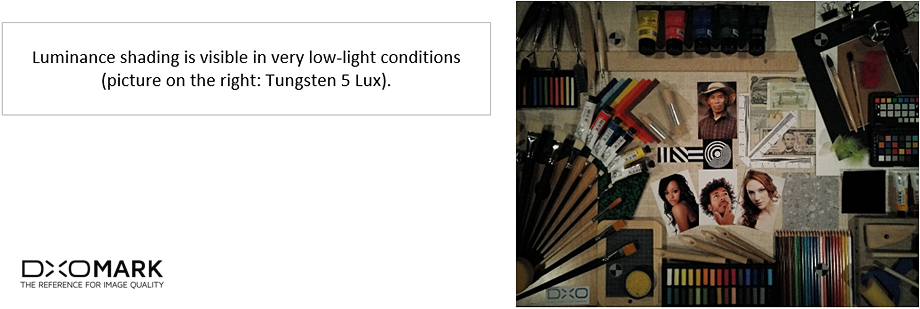

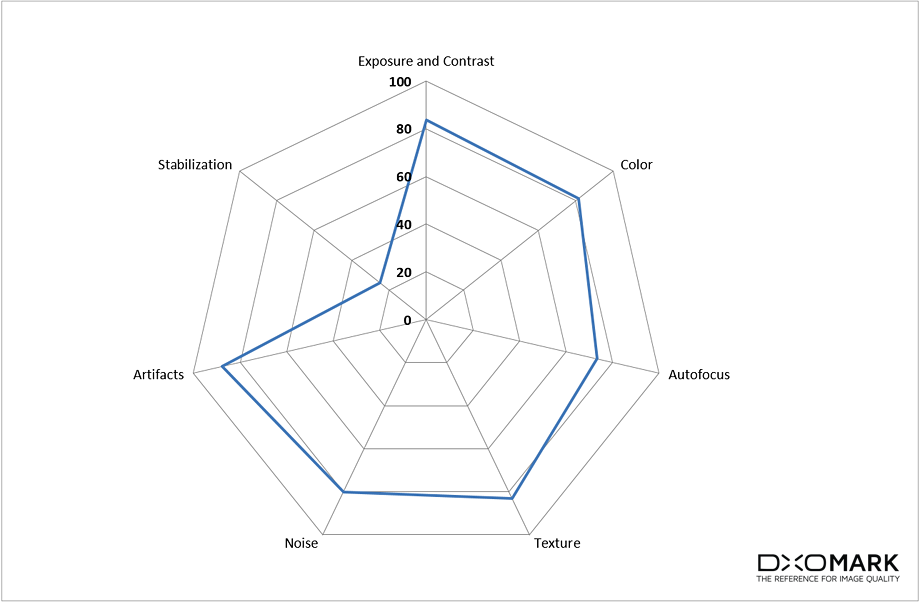
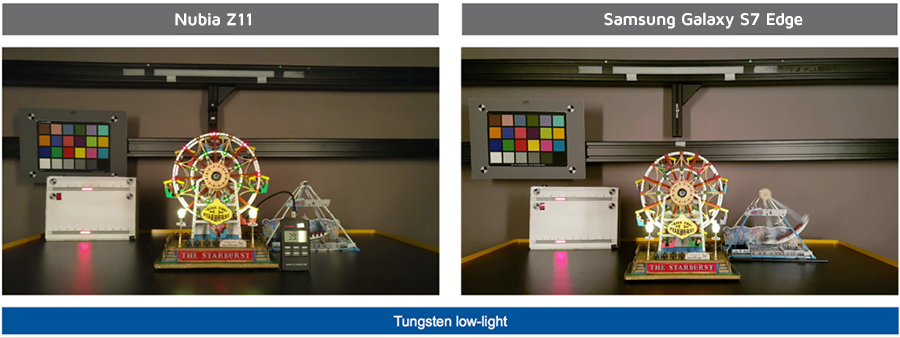

DXOMARK encourages its readers to share comments on the articles. To read or post comments, Disqus cookies are required. Change your Cookies Preferences and read more about our Comment Policy.